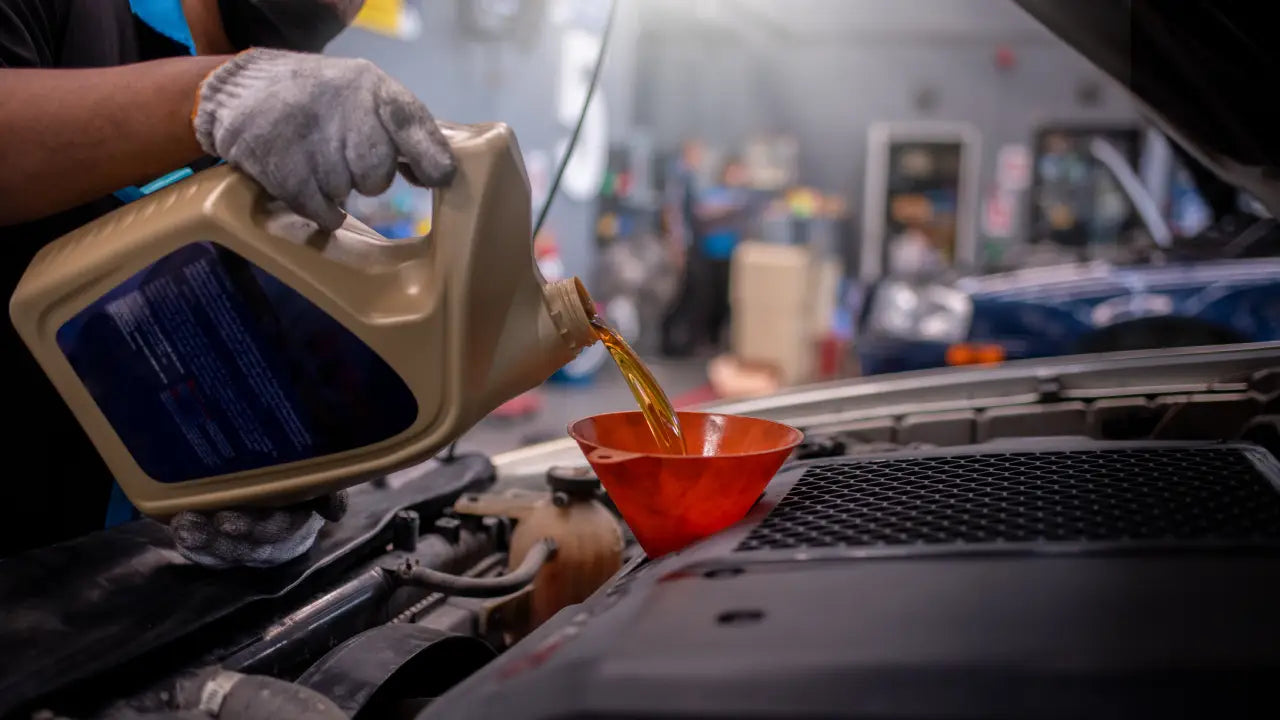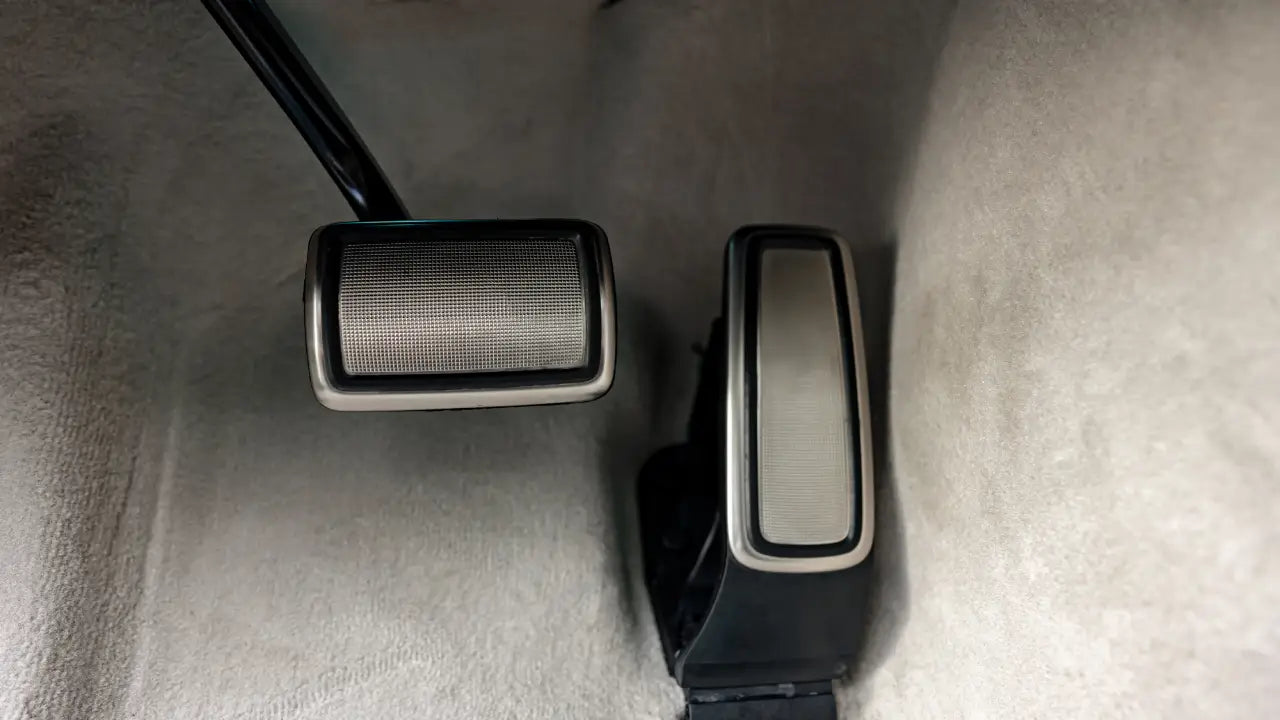The catalytic converter is a critical component of modern vehicles, designed to reduce harmful emissions and promote environmental sustainability. However, the rising value of precious metals within catalytic converters has fueled a concerning trend of catalytic converter thefts. This blog post will answer the “What is a catalytic converter?” and “Why do people steal catalytic converters?” questions. Also, if you want to learn anti-theft measures for catalytic converters, all you need to do is read this blog till the end.

The Functions of A Catalytic Converter
The catalytic converter is an integral part of a car exhaust system positioned between the engine and the muffler. Here is a detailed overview of the primary functions of catalytic converters:
- Pollution Reduction: Catalytic converters facilitate chemical reactions that convert harmful gasses such as carbon monoxide (CO), nitrogen oxides (NOx), and unburned hydrocarbons into less harmful substances like carbon dioxide (CO2), nitrogen (N2), and water vapor.
- Oxidation and Reduction Reactions: Through oxidation and reduction processes, the catalytic converter utilizes catalysts, typically composed of precious metals like platinum, palladium, and rhodium, to promote the conversion of pollutants into less toxic compounds.
- Emission Compliance: Catalytic converters play a vital role in ensuring vehicles comply with emissions standards and regulations imposed by environmental authorities. They are integral in reducing air pollution and promoting cleaner air quality.
The Reasons Why People Steal Catalytic Converters
Recently, there has been an unfortunate rise in catalytic converter thefts. Let’s explain why people steal catalytic converters:
- Precious Metal Value: Catalytic converters contain valuable metals, including platinum, palladium, and rhodium. The black market demand for these precious metals has surged, leading thieves to target catalytic converters as a lucrative source of quick income. Also, when metal prices rise, thieves have more incentive to target catalytic converters.
- Ease of Access: Catalytic converters are relatively accessible underneath vehicles, making them vulnerable targets for theft. The quick and discreet removal process attracts thieves seeking swift and low-risk opportunities.
- Lack of Identification: Catalytic converters often lack identifiable markings, making it challenging to trace stolen components. This anonymity further encourages theft, as stolen converters can be easily sold without the risk of detection.
Quick Turnaround for Profit: The entire theft process, from removal to selling the stolen converters, can be accomplished rapidly. This quick turnaround provides thieves with a source of immediate profit, contributing to the appeal of catalytic converter theft.
How to Prevent Catalytic Converter Theft?
The surge in catalytic converter theft incidents requires a proactive approach to safeguarding vehicles and their valuable components. Let's talk about how advanced security measures act as formidable deterrents, making it increasingly challenging for thieves to target and steal catalytic converters.
Car Security Cameras
Car security cameras act as vigilant watchdogs, capturing and recording activities around the vehicle. These cameras serve as a powerful deterrent, dissuading potential thieves who are less likely to engage in illicit activities when under surveillance.
Steering Wheel Locks
Steering wheel locks physically obstruct the vehicle's steering mechanism, presenting a visible impediment to thieves. This hinders their ability to operate the vehicle and adds an extra layer of complexity, discouraging attempts to steal the catalytic converter.
Tire Locks And Tire Boots
Tire locks and boots immobilize the vehicle, creating a significant obstacle for thieves seeking quick getaways. This physical restraint adds a time-consuming element to their illicit endeavors, deterring them from targeting the catalytic converter.
GPS Tracker
A GPS tracker provides real-time location monitoring, enabling swift response during theft. Thieves are dissuaded by the increased likelihood of being tracked and apprehended, discouraging them from targeting vehicles with such advanced tracking systems.
OBD II LOCK
Securing the OBD II port with a lock prevents unauthorized access to crucial vehicle systems. Thieves often exploit this vulnerability for reprogramming purposes, but with this added layer of protection, they face increased difficulty in tampering with the vehicle's security.
RFID Blocking Pouches
Protecting the key fob with RFID-blocking pouches disrupts common relay attack tactics. Thieves attempting to amplify key fob signals are thwarted, dissuading them from pursuing vehicles equipped with such protective measures.
Catalytic Converter Shields And Locks
Directly addressing the primary target, shields, and locks on the catalytic converter create a formidable barrier. Thieves are met with increased complexity and time-consuming challenges, reducing the appeal of targeting vehicles with these enhanced protective measures.
Killswitches
Killswitches disrupt the vehicle's electrical system, rendering the engine inoperable. Thieves encountering this sophisticated security feature face a substantial hurdle, deterring them from attempting to start the vehicle and proceed with catalytic converter theft.
As you can see, these advanced security measures fortify vehicles against catalytic converter thefts and actively dissuade potential thieves. If you want to learn more about these anti-theft measures for catalytic converters, you can read our detailed blog “The Rise of Car and Catalytic Converter Theft: How To Keep Your Car Safe with Antitheft Products.”
FAQs About Catalytic Converters
What Are Common Signs of a Failing Catalytic Converter?
Several indicators suggest a catalytic converter may be malfunctioning:
- Check Engine Light: A persistent check engine light may signal issues with the converter.
- Reduced Performance: A decrease in engine performance and efficiency.
- Unusual Odors: The presence of strange odors, such as a sulfur-like smell, may indicate converter problems.
- Excessive Exhaust Smoke: An increase in smoke from the tailpipe can indicate a failing converter.
How Long Does a Catalytic Converter Typically Last?
The lifespan of a catalytic converter varies based on factors like driving conditions and maintenance. On average, converters can last between 70,000 to 100,000 miles. Regular vehicle maintenance and addressing issues promptly can extend the converter's longevity.
Can a Catalytic Converter Be Repaired Instead of Replaced?
In some cases, minor issues like clogs or damage to the outer shell can be repaired. However, internal catalyst damage is typically irreversible. Repairing or replacing a catalytic converter depends on the extent of the damage. Professional assessment by a mechanic is recommended to determine the most cost-effective and environmentally friendly solution.










